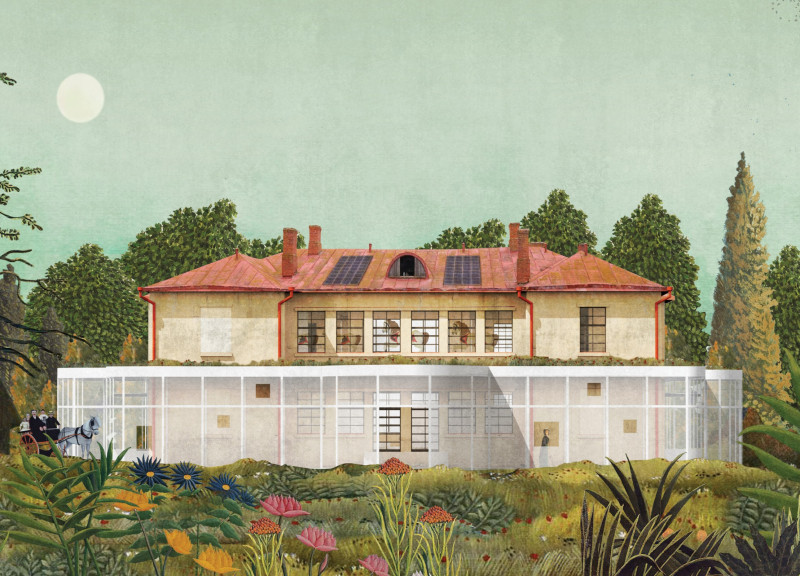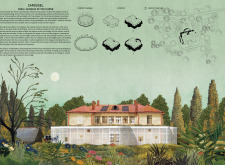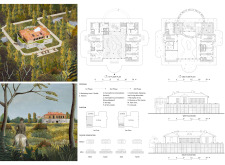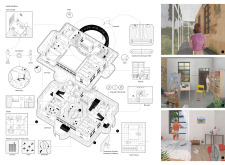5 key facts about this project
The Carousel Omuli Museum of the Horse is located in the North Latvia Biosphere Reserve, repurposing the historic Omuli Primary School into a vibrant cultural complex. The design focuses on adaptive reuse, sustainability, and engagement with the local community. By emphasizing the historical significance of the existing structure, the project aims to create a space that meets the needs of artists and fosters community interaction.
Design Approach
The renovation preserves the original exterior walls of the historic building, ensuring that the historical context remains intact. This careful preservation highlights the story embedded within the architecture. A modern touch is added through a layer of perforated aluminum cladding on the façade. This new layer enhances the building’s appearance while allowing natural light and air to flow into the interior spaces.
Functional Layout
The interior layout promotes flexibility by removing most interior walls, which creates an open double-height environment. This design allows for various uses, including workshops, exhibition areas, and café spaces. The flow of natural light into these spaces creates a lively atmosphere, supporting creativity and collaboration among artists and visitors.
Sustainability Features
Sustainability plays a key role in the design. Several features are included to minimize environmental impact. A green roof is designed to enhance biodiversity and improve energy efficiency, aligning with the local ecosystem. Additionally, a water recycling system is incorporated to reduce the demand for fresh water, promoting responsible resource use throughout the complex.
Unique Design Element
One notable feature is a structure inspired by a carousel. This playful element acts as a focal point and helps to connect indoor and outdoor experiences. It adds a dynamic aspect to the space, encouraging visitors to move freely and engage with the surroundings. This design detail enhances the overall experience, blending the museum’s function with the natural environment.





















































